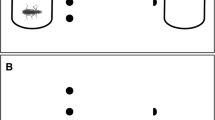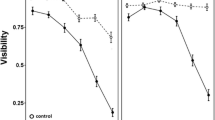Abstract
Age and size at metamorphosis are two important fitness components in species with complex life cycles. In anurans, metamorphic traits show remarkable phenotypic plasticity, especially in response to changes in growth conditions. It is also possible that the perception of risk directly determines changes in larval period and the size of metamorphs. This study examines how the perception of predation risk affects the timing of and size at metamorphosis in common frogs (Rana temporaria). I raised tadpoles at two risk levels (fish-conditioned water or unconditioned water) crossed with the availability or lack of food at night (all tadpoles had food available in the day). Tadpoles reacted to chemical cues from predatory fish by decreasing activity. A novel behavioural result was a predation×food interaction effect on refuge use, which also accounted for most of the predator main effect: predation risk only caused increased refuge use in the night-starved treatment. Despite these behavioural modifications, the perception of predation risk did not affect growth rate and mass at metamorphosis in a simple way: the effects of food regime on growth and size at metamorphosis were dependent on the level of predation risk as revealed by significant predation×food interaction effects. Tadpoles who had food withheld at night metamorphosed at the smallest size, suggesting a negative relationship between size at metamorphosis and refuge use. Tadpoles raised in fish-conditioned water had longer larval periods than those in unconditioned water, but these differences were significant only if food was available at night. These results conflict with the hypotheses that tadpoles should reduce their larval period or growth rates (and hence metamorphose at a smaller size) as the risk of predation increases. In contrast to predation risk, food availability strongly affected the length of the larval period: night-starved tadpoles metamorphosed relatively early with or without fish stimulus. Thus, early metamorphosis resulted from periods of low food availability, but not from a heightened ”perceived risk” of predation. This example counters the hypothesis of acceleration of the developmental rate (which shortens the time to metamorphosis) as a mechanism to escape a risky environment.
Similar content being viewed by others
Author information
Authors and Affiliations
Additional information
Received: 18 August 1999 / Accepted: 10 January 2000
Rights and permissions
About this article
Cite this article
Nicieza, A. Interacting effects of predation risk and food availability on larval anuran behaviour and development. Oecologia 123, 497–505 (2000). https://doi.org/10.1007/s004420000343
Issue Date:
DOI: https://doi.org/10.1007/s004420000343




